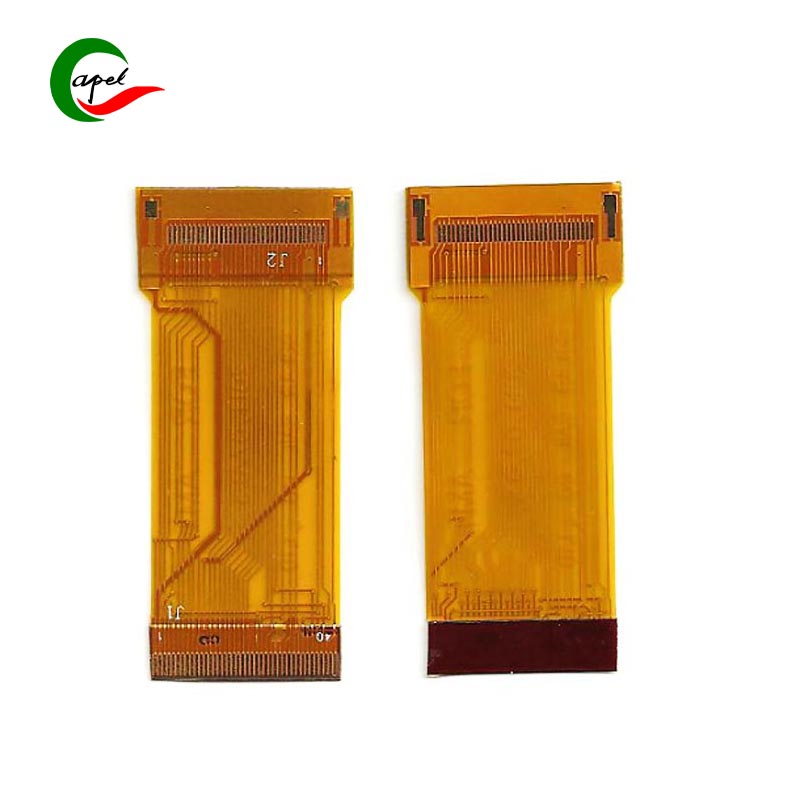


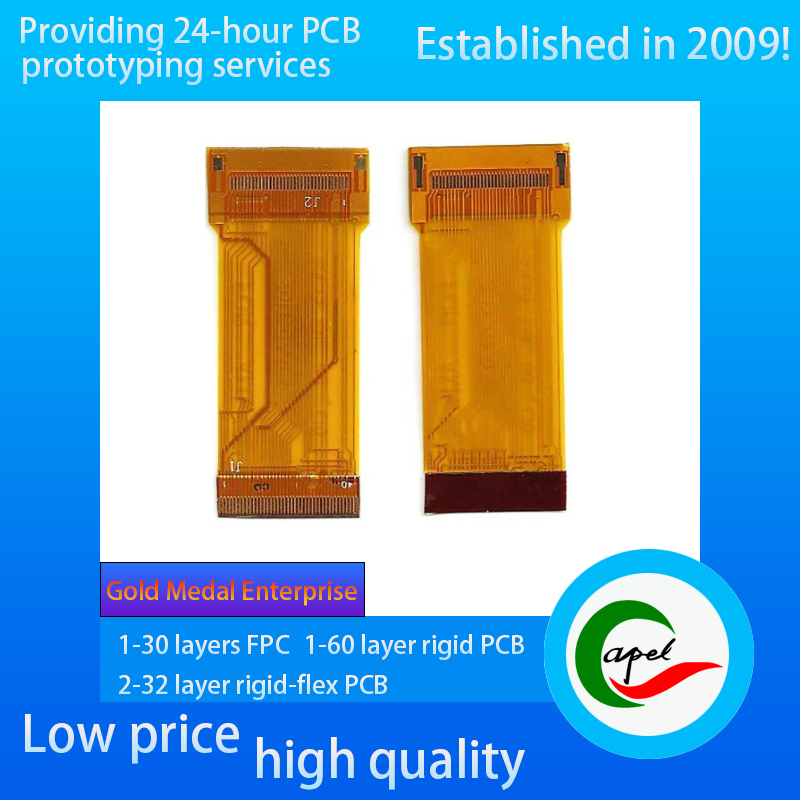
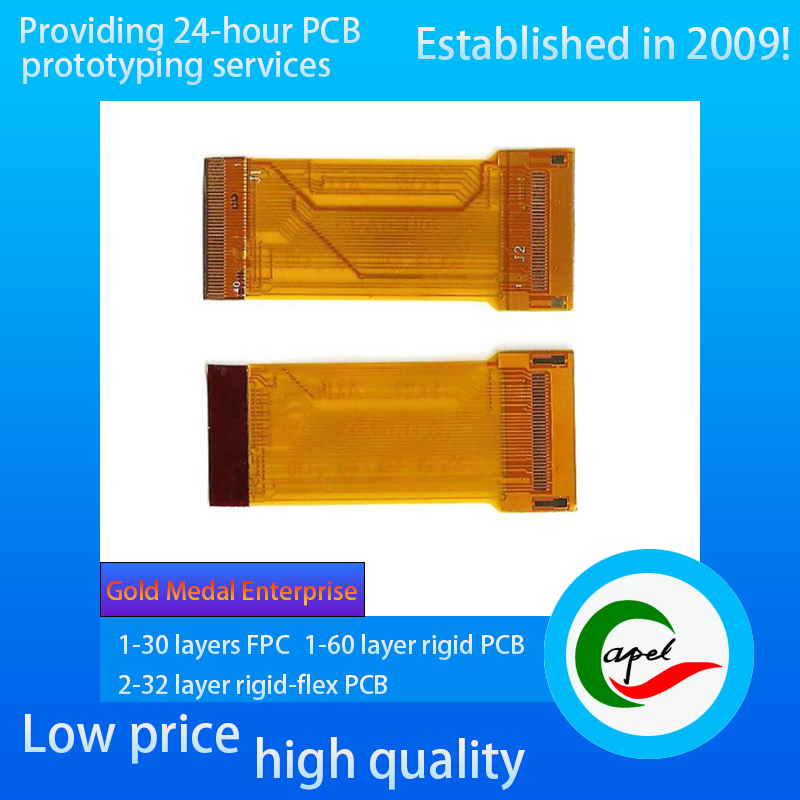
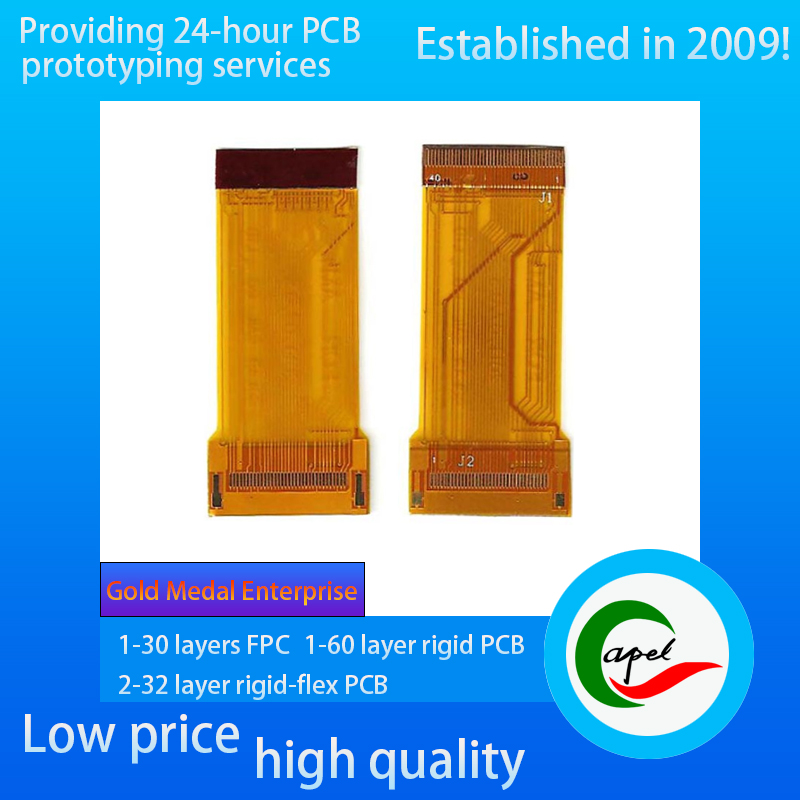
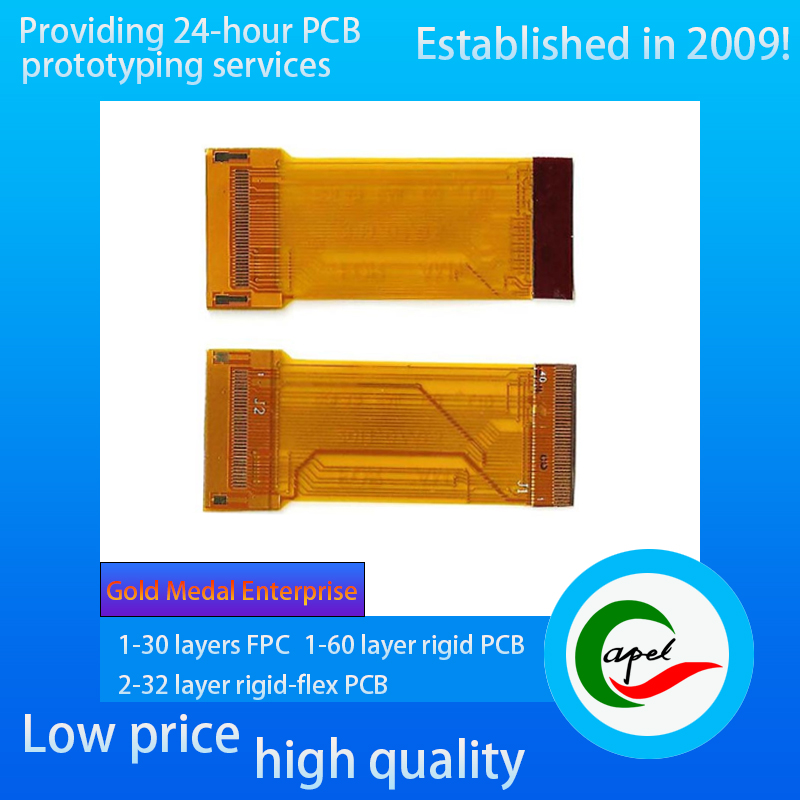

Automotive Dashboard FPC
A short introduction:
Type: Automotive Dashboard FPC
Minimum Line Width/Line Spacing: 0.08mm/0.075mm
Number of Layers: 2 Layers
Thickness: 0.12mm
Surface Finish: Immersion Gold 1 micro-inch
Kaboer's Services:
Support Customized 1-30 Layer FPC Flexible PCB, 2-32 Layers Rigid-Flexible Circuit Boards, 1-60 Layers Rigid PCB, Reliable and fast turnaround! PCB prototyping, rapid SMT PCB assembly
Industries we serve:
Medical devices, IoT, TUT, drones, aerospace, automotive, telecom, consumer electronics, military, aerospace, industrial control, AI, electric vehicles, etc. ......
If you have related needs, please feel free to send us an email by clicking the button below.
Type: FPC for automotive instrument panel, specially designed for automotive instrument system, with excellent flexible adaptation and environmental resistance. Whether it is the electronic upgrade of traditional mechanical instrument panel or the high-definition display module of full LCD instrument panel, it can be flexibly adapted to the complex spatial layout inside the instrument panel (e.g. the edge of curved screen, multi-module integration area), realizing the precise conduction of sensor data, control signals and display drive, and providing drivers with real-time and clear information about the vehicle condition.
Minimum line width/spacing: 0.08mm/0.075mm high precision standard. This parameter is optimized for the parallel transmission of multiple signals in the instrument panel: 0.08mm line width ensures that high-frequency data signals such as rotational speed, hourly speed, water temperature, etc. are transmitted with lower loss (signal delay ≤ 1ms); 0.075mm line spacing realizes dense wiring within the limited space for wiring, supports the independent transmission of LCD drive signals, sensor data signals and backlight control signals, and avoids display abnormalities (e.g. data jumps, data fluctuations, and backlight control signals) due to signal crosstalk. Avoid display abnormality (such as data jumping, garbled code) caused by signal crosstalk.
Layers: 2-layer structural design to realize fine signal management through scientific layering:
Signal layer: adopts differential routing and equal-length wiring design to meet the demand for high refresh rate display of the instrument panel (supporting dynamic data refresh above 60Hz), ensuring the tachometer and speedometer pointers to be smooth and free of lagging;
Ground layer: a large-area copper foil covers to form an electromagnetic shielding barrier, which can effectively isolate the electromagnetic radiation from the strong interference sources of the automobile engine, motor, RF module, etc., and ensure the protection of micromagnetic radiation from the interference sources of the automobile engine, motor, and RF module. Ground layer: a large area of copper foil covers the electromagnetic shielding barrier, effectively isolating the electromagnetic radiation from strong sources of interference such as automobile engines, motors, radio frequency modules, etc., and guaranteeing the purity of the transmission of weak sensor signals (such as oil level and tire pressure data).
The two-layer synergy significantly reduces the risk of signal interference, especially suitable for the high-definition display scene of the full LCD instrument panel.
Thickness: Only 0.12mm thin and light characteristics, perfectly adapted to the compact and lightweight design needs of automotive instrument panels. Under the trend of “thinning” of full LCD instrument panel (e.g. instrument thickness <20mm), it can significantly reduce the space occupied by the wiring and release space for core components such as larger display and backlight module; meanwhile, it improves the flexibility of bending during assembly (supporting the minimum bending radius of R=0.8mm), and fits the complex curved wiring paths inside the instrument panel. Surface treatment: 1-micron gold-immersed surface is used.
Surface treatment: 1-micron-inch immersion gold process (nickel layer thickness ≥3μm, gold layer thickness ≥0.025μm), bringing multiple automotive-grade advantages:
excellent conductivity of the gold layer, reducing signal transmission loss and ensuring real-time data display (data update delay <50ms);
1-micron-inch precision gold layer thickness balances the corrosion resistance and cost to adapt to the interior of the automobile temperature and humidity fluctuations (-40 ℃ ~ +85 ℃), oil and dirt erosion, and so on. (-40℃~+85℃), oil erosion and other harsh environments (no corrosion through 1500 hours of salt spray test);
enhance the reliability of the soldering joints to ensure that the wires and instrument display, the main control board of the soldered parts of the long term vibration (10-2000Hz, 8g acceleration) and thermal cycling does not come off, to prolong the service life of the product (designed to last for ≥ 15 years / 200,000 kilometers).
Kaboer Flexible PCB & Rigid-Flex PCB Process Capability
| Category | Process Capability | Category | Process Capability |
| Production Type |
Single layer FPC / Double layers FPC Multi-layer FPC / Aluminum PCBs Rigid-Flex PCB |
Layers Number |
1-30 layers FPC 2-32 layers Rigid-FlexPCB 1-60 layers Rigid PCB HDI Boards |
| Max Manufacture Size |
Single layer FPC 4000mm Double layers FPC 1200mm Multi-layers FPC 750mm Rigid-Flex PCB 750mm |
Insulating Layer Thickness |
27.5um /37.5/ 50um /65/ 75um / 100um / 125um / 150um |
| Board Thickness |
FPC 0.06mm - 0.4mm Rigid-Flex PCB 0.25 - 6.0mm |
Tolerance of PTH Size |
±0.075mm |
| Surface Finish |
Immersion Gold/Immersion Silver/Gold Plating/Tin Plating/OSP |
Stiffener | FR4 / PI / PET / SUS / PSA/Alu |
| Semicircle Orifice Size | Min 0.4mm | Min Line Space/ width | 0.045mm/0.045mm |
| Thickness Tolerance | ±0.03mm | Impedance | 50Ω-120Ω |
| Copper Foil Thickness | 9um/12um / 18um / 35um / 70um/100um |
Impedance Controlled Tolerance |
±10% |
|
Tolerance of NPTH Size |
±0.05mm | The Min Flush Width | 0.80mm |
| Min Via Hole | 0.1mm |
Implement Standard |
GB / IPC-650 / IPC-6012 / IPC-6013II / IPC-6013III |












Kaboer manufacturing PCBs since 2009. Professional technology and high-precision Printed Circuit Boards involved in Medical, IOT, UAV, Aviation, Automotive, Aerospace, Industrial Control, Artificial Intelligence, Consumer Electronics etc..